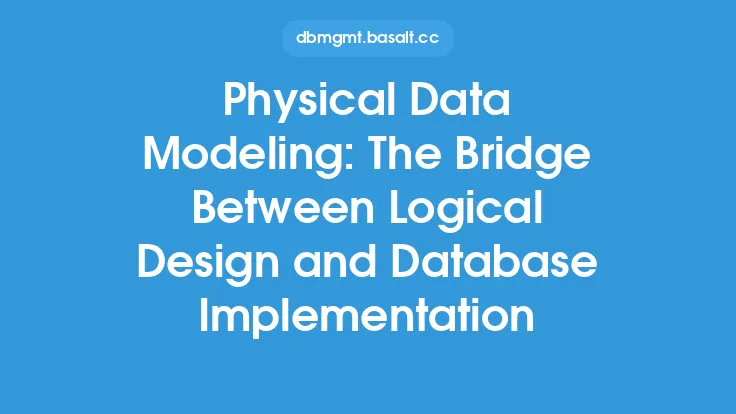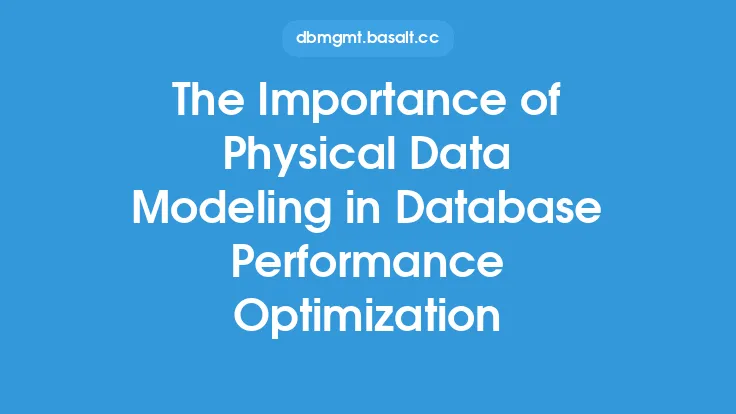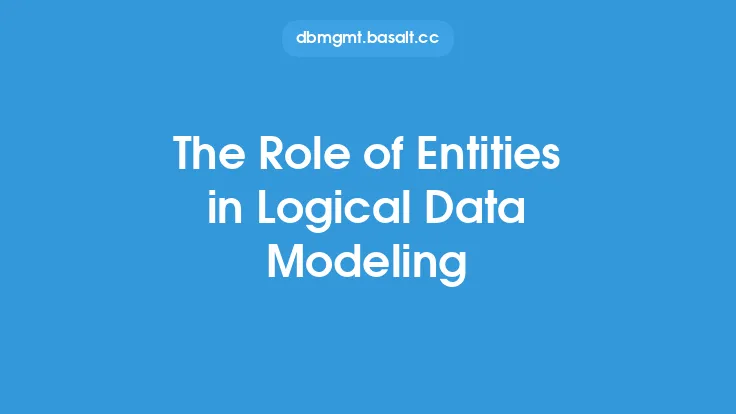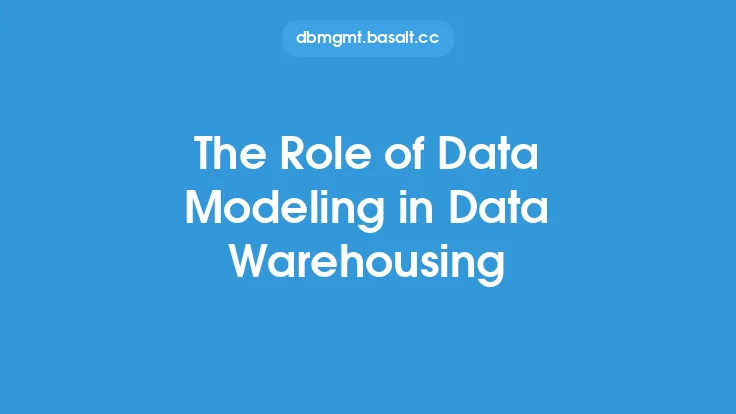The field of logical data modeling is constantly evolving, driven by advances in technology, changing business needs, and the increasing complexity of data ecosystems. As organizations strive to make better decisions, improve operational efficiency, and drive innovation, the role of logical data modeling has become more critical than ever. In this article, we will explore the trends and innovations shaping the future of logical data modeling, and examine the key factors that will influence its development in the years to come.
Introduction to Emerging Trends
Logical data modeling is no longer just about creating a conceptual representation of data entities and their relationships. It has become a crucial component of a broader data management strategy, encompassing data governance, data quality, and data analytics. The emerging trends in logical data modeling are focused on addressing the challenges posed by big data, cloud computing, artificial intelligence, and the Internet of Things (IoT). These trends include the adoption of agile methodologies, the use of automated tools and techniques, and the integration of data modeling with other disciplines such as data science and business analytics.
The Impact of Big Data and NoSQL Databases
The proliferation of big data and NoSQL databases has significant implications for logical data modeling. Traditional relational databases are no longer the only game in town, and data modelers must now contend with a diverse range of data storage technologies, including document-oriented databases, graph databases, and key-value stores. This has led to the development of new data modeling techniques and notations, such as the Entity-Attribute-Value (EAV) model and the Object-Role Modeling (ORM) approach. Additionally, the use of big data and NoSQL databases has highlighted the need for more flexible and adaptable data modeling approaches, which can accommodate the complexities and nuances of large-scale, heterogeneous data ecosystems.
The Role of Artificial Intelligence and Machine Learning
Artificial intelligence (AI) and machine learning (ML) are transforming the field of logical data modeling, enabling the automation of many tasks and processes. AI-powered tools can analyze large datasets, identify patterns and relationships, and generate data models automatically. ML algorithms can be used to optimize data models, improve data quality, and predict data trends. Furthermore, the integration of AI and ML with logical data modeling has the potential to revolutionize the way we approach data management, enabling organizations to make better decisions, improve operational efficiency, and drive innovation.
Cloud Computing and Data Modeling as a Service
The advent of cloud computing has led to the development of Data Modeling as a Service (DMaaS), which provides organizations with on-demand access to data modeling tools, techniques, and expertise. DMaaS platforms offer a range of benefits, including reduced costs, increased scalability, and improved collaboration. Additionally, cloud-based data modeling tools can be easily integrated with other cloud-based services, such as data warehousing, business intelligence, and data analytics, enabling organizations to create a seamless and integrated data management ecosystem.
The Importance of Data Governance and Metadata Management
Data governance and metadata management are critical components of a logical data modeling strategy. As organizations create and manage large amounts of data, they must ensure that their data assets are properly governed, managed, and maintained. This includes the development of data governance policies, procedures, and standards, as well as the implementation of metadata management systems that can capture, store, and manage metadata from diverse sources. Effective data governance and metadata management are essential for ensuring data quality, integrity, and security, and for enabling organizations to make better decisions and drive business value from their data assets.
The Future of Data Modeling Notations and Standards
The development of new data modeling notations and standards is an ongoing process, driven by the need for more expressive, flexible, and adaptable modeling languages. The Object Management Group (OMG) has developed a range of standards, including the Unified Modeling Language (UML) and the Business Process Model and Notation (BPMN), which are widely used in the field of logical data modeling. Additionally, the development of new notations and standards, such as the Data Modeling Notation (DMN) and the Decision Model and Notation (DMN), is expected to continue, driven by the need for more precise, concise, and expressive modeling languages.
The Intersection of Logical Data Modeling and Data Science
The intersection of logical data modeling and data science is a rapidly evolving area, driven by the need for more integrated and interdisciplinary approaches to data management. Data scientists and data modelers must work together to develop data models that can support advanced analytics, machine learning, and data visualization. This requires a deep understanding of data science concepts, techniques, and tools, as well as the ability to communicate complex data modeling concepts to non-technical stakeholders. The integration of logical data modeling and data science has the potential to revolutionize the way we approach data management, enabling organizations to make better decisions, improve operational efficiency, and drive innovation.
Conclusion
The future of logical data modeling is exciting and dynamic, driven by advances in technology, changing business needs, and the increasing complexity of data ecosystems. As organizations strive to make better decisions, improve operational efficiency, and drive innovation, the role of logical data modeling has become more critical than ever. By embracing emerging trends and innovations, such as agile methodologies, automated tools and techniques, and the integration of data modeling with other disciplines, organizations can create a robust, flexible, and adaptable data management strategy that supports their business goals and objectives.





